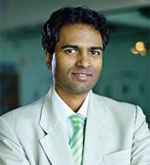The VRF Conference revealed the frustration among some manufacturers at the lack of an independent, third-party testing and certification regimen to evaluate the performance of products coming into the region

B Surendar
The VRF Conference we conducted in February in Dubai – I hope you have had the chance to read the March and April reports in the magazine – revealed the frustration among some manufacturers at the lack of an independent, third-party testing and certification regimen to evaluate the performance of products coming into the region. The very same manufacturers called for greater vigilance to track and trap those that presented a souped-up product for testing; the products that subsequently arrived at the marketplace, the aggrieved manufactures added, did not embody the attributes of the sample submitted for approval.
Listening to them during the conference raised the imagery of sending in a Trojan Horse to facilitate the opening of the gates for a sub-standard deluge. Such an occurrence in the region would be counter-productive and going against the avowed regional drive for greater energy efficiency.
Almost a month from then, it was interesting to listen to Phil Whitaker of Camfil Farr during an interview for an article in this issue. Phil was speaking from the perspective of air filters when he called for independent, open-market-source, third-party reporting in the region. Citing the examples of the United States and Europe, which benefitted from such reporting, he suggested reaching out to available international reporting standards till the UAE had established its own standards and testing capabilities for “regulatory detection”.
Phil will be speaking at the 1st Annual Middle East Indoor Environmental Quality Conference on the 12th and the 13th of May at the Dubai International Convention and Exhibition Centre. I hope you will be able to join us to listen to the discussions and also to the several other discussions on a range of issues related to air filtration, ducting, thermal comfort, moisture, acoustics and vibration.
Of special interest to me is a discussion on the topic, ‘The role of civil engineering in ensuring good IEQ’. It harks back to the age-old adage that we ought to address not just the symptoms but also the cause. It is a well-known fact that moisture build-up during the construction phase leads to grievous problems. During the height of the construction boom, buildings shot up on the Dubai landscape at a frightening pace, the downside of which, as evidenced by a particular development in Dubai, was the build-up of mould. The building in question had to be shut down for a week for inspection and for evolving a remedial measure, which if I may add, resulted in an increase in energy usage in the building.
The building was a classic case of IEQ and energy efficiency gone wrong and nothing short of an engineering tragedy.
– B Surendar
Copyright © 2006-2025 - CPI Industry. All rights reserved.